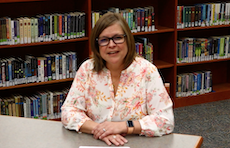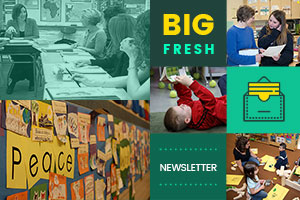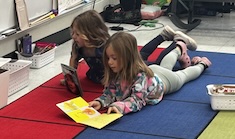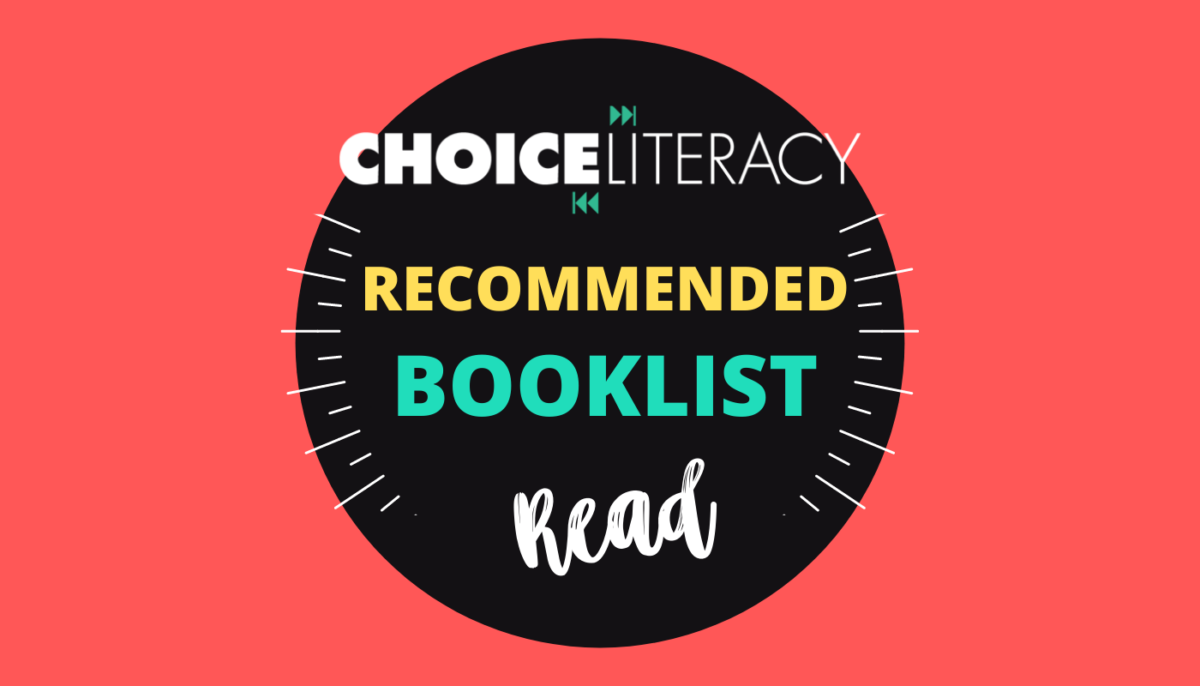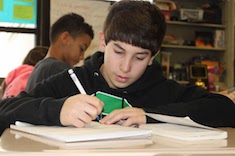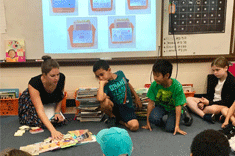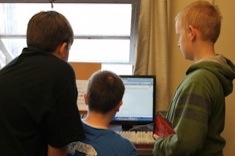Library
Choice Literacy Articles & Videos
The Choice Literacy library contains over 3,000 articles and 900 videos from 150+ contributors. Classic Classroom and Literacy Leadership subscribers have access to the entire library. Content is updated continuously, with five to six new features published each week.
Latest Content
Expecting Joy in the Classroom Library
Bitsy Parks shares the joy you can expect from the classroom library.
February 7, 2025: Boost Talk = Boost Learning
This week’s newsletter is about boosting talk in your classroom.
Sketchnoting in the Library
Gigi McAllister shares how she helped her students get started with sketchnoting during read aloud time. Perhaps like Gigi you aren’t a natural at this format, but you’ll be inspired by the value and ease of introducing this powerful note-taking technique.
Fostering Classroom Dialogue
Gretchen Schroeder shares her big takeaways from reading Inspiring Dialogue. Now more than ever, we need to help students express themselves and claim their voices, because the classroom is one of the last places where we can engage in dialogue about big questions with those who might not share our beliefs.
QuickTake: Using Picture Books to Start Conversations
Gigi McAllister reminds us of the special way picture books can open the doors of conversation.
January 31, 2025: Meaning Matters
This week’s newsletter is about making meaning with our learning.
Meaning Makers
Josie Stewart and Hannah Tills push against the adage that “early readers are focused solely on learning to decode, while later readers are making meaning.” Instead they remind us of the beautiful way all readers are meaning makers.
Zooming In and Stepping Back
Gretchen Schroeder creatively leads her students in chronicling key scenes from a novel so they can evaluate which ones are important and use it as a reference throughout their discussions.
January 24, 2025: Ways to Show Learning
This week’s newsletter is about assessing student learning.
I Was Wrong About…
Gretchen Schroeder invited her students to write personal essays inspired by the 2022 New York Times series “I Was Wrong About.” Gretchen shared with her students (and now shares with us) the way she was wrong about her mammy collection.
Alternatives to a Literary Essay: Two-Voice Perspective Poems
Tara Barnett and Kate Mills offer an alternative to writing a literary essay for middle school students. Providing alternative ways to discuss and demonstrate understanding about reading can be a welcome break from an essay for both students and educators, with valuable learning still taking place.
January 17, 2025: More Engaged Students
This week’s newsletter is about engagement.
December 20, 2024: Graphic Novels and Novels in Verse
This week’s newsletter is about graphic novels and novels in verse.
December 13, 2024: Literacy in All Subjects
This week’s newsletter is about literacy in all subjects..
December 6, 2024: Gratitude
This week’s newsletter is about the importance of gratitude.
Delving Deeper Through Inquiry-Based Learning
Jodie Bailey suggests using books, pictures, or examples to begin or increase inquiry-based learning in your classroom. Using an example of learning more about pi from her classroom, Jodie offers ways to help students deepen their learning in any content area.
Girls’ Sports Books
Leigh Anne Eck noticed a gap in her library when it came to books with athletic female protagonists. After discovering many titles to add to her own library, Leigh Anne compiled this booklist so we can all fill this gap in our classroom libraries.
Literacy Skills in All Content Areas
Julie Cox reminds us that each content area is full of opportunities for students to give shape to their ideas in all kinds of ways that don’t look like traditional essays but still help them develop their literacy skills.
November 22, 2024: Vulnerability
This week’s newsletter is about fostering strong connections.
November 15, 2024: Supporting Learners
This week’s newsletter is about supporting learners.
Leading with Empathy in the Classroom
Melissa Quimby offers profound advice for what to do when we notice inattention, excessive questioning, frozen learners, or disruptive behaviors. She recommends letting empathy lead our next steps.
November 8, 2024: Growing Writers
This week’s newsletter is about growing writers.
November 1, 2024: A Community of Secondary Readers
This week’s newsletter is about nourishing a community of secondary readers.
October 25, 2024: Talking Politics?
This week’s newsletter is about talking politics with students.
I’m an Everything Person!
Bitsy Parks writes about the connection between identity and engagement, offering small steps to help all students believe in themselves as learners.
Love Poetry: Take It or Leave It, but Tell Me Why
In today’s world we are bombarded with opinions that are increasingly polarizing, and this is especially true for teens and their opinions of love poems. Gretchen Schroeder uses love poems to help students learn how to back up an opinion with criteria, details, and examples.
Considerations for AI in the Classroom
Julie Cox wrestles with the use of AI to support high school writers. In this article she offers filters for educators to determine the role of AI in their classrooms.
Unleashing Writers
Mandy Robek chronicles the way choice and independence allowed students to have more energy and joy while writing.
Reframing Writers
Julie Johnson encourages educators to take a more in-depth view when assessing student writers. Checklists don’t necessarily grow writers, but focusing on what students are doing well and nudging them forward will.
Literary Salons: Book Clubs, Elevated
Inspired by the 17th-century popularity of literary salons, Gretchen Schroeder changed the usual book club routine for her high school students. Literary salons allow people to explore big topics and ideas together without reading the same book. They can create engaging discussions, expose students to new ideas and books, and give them the chance to learn from one another in a relaxed way.
Browse Content By
Type
Category
- Assessment Tools
- Big Fresh Archives
- Booklists
- Choice Numeracy
- Classroom Design
- Common Core
- Community Building
- Conferring
- Content Literacy
- Digital Literacy
- English Language Learners
- Equity
- Family Relations
- Free Samples
- Guiding Groups
- Leadership
- Literacy Coaches
- Mentor Texts
- Minilessons
- New Teacher Mentors
- Podcasts
- Poetry
- Quote Collections
- Reading Strategies
- Self Care
- Struggling and Striving Learners
- Talking and Listening
- Teacher Study Groups
- Teaching Reading
- Teaching Writing
- Word Study and Vocabulary
Author
- Melissa Quimby
- Nawal Qarooni
- Gwen Blumberg
- Julie Cox
- The Lead Learners
- Hannah Tills
- Josie Stewart
- Ruth Metcalfe
- Mallory Messenger
- Becca Burk
- Jodie Bailey
- Vivian Chen
- Mary Brower
- Tiffany Abbott Fuller
- Stephanie Affinito
- Ruth Ayres
- Leigh Anne Eck
- Heather Fisher
- Shari Frost
- Julie Johnson
- Suzy Kaback
- Gigi McAllister
- Shirl McPhillips
- Melanie Meehan
- Cathy Mere
- Debbie Miller
- Tara Barnett and Kate Mills
- Tammy Mulligan
- Dana Murphy
- Bitsy Parks
- David Pittman
- Brenda Power
- Heather Rader
- Matt Renwick
- Mandy Robek
- Christy Rush-Levine
- Gretchen Schroeder
- Jen Schwanke
- Brian Sepe
- Katherine Sokolowski
- Stella Villalba
- Jennifer Vincent
Grade Level
Choice Literacy Membership
Articles
Get full access to all Choice Literacy article content
Videos
Get full access to all Choice Literacy video content
Courses
Access Choice Literacy course curriculum and training

